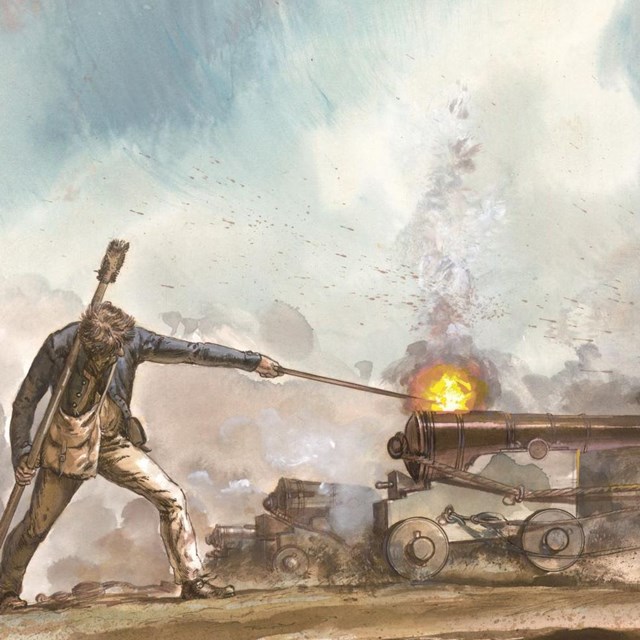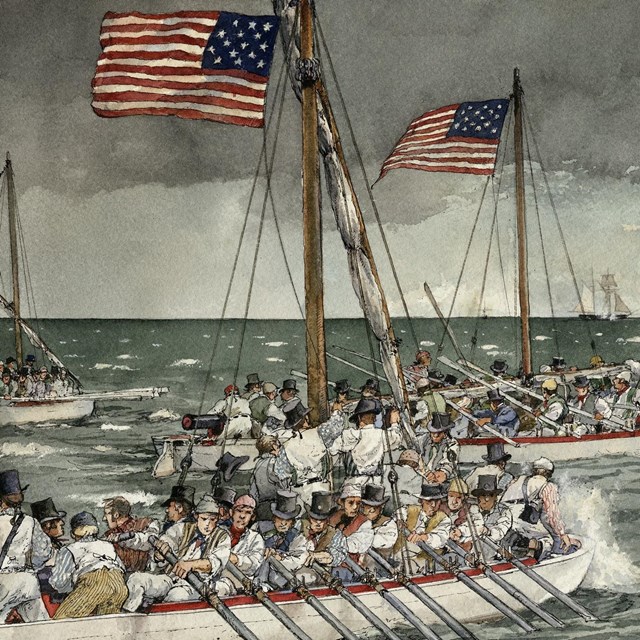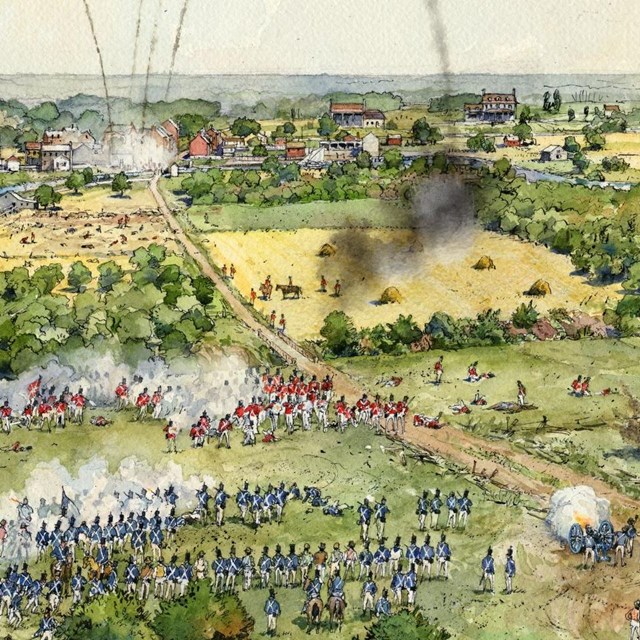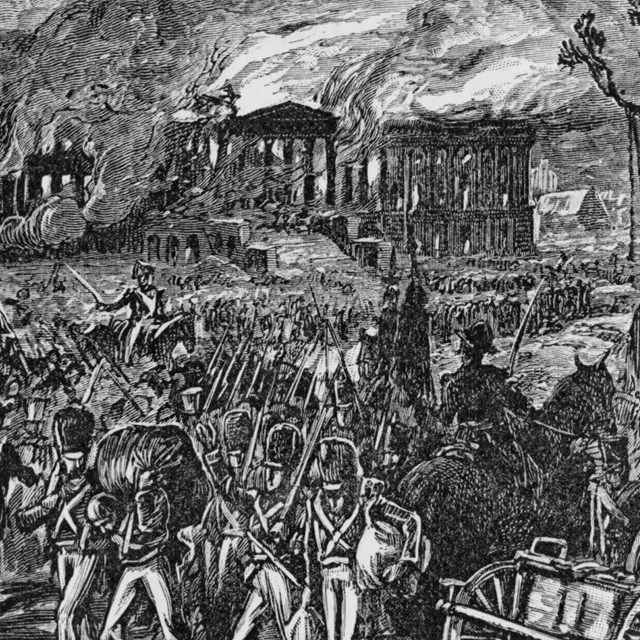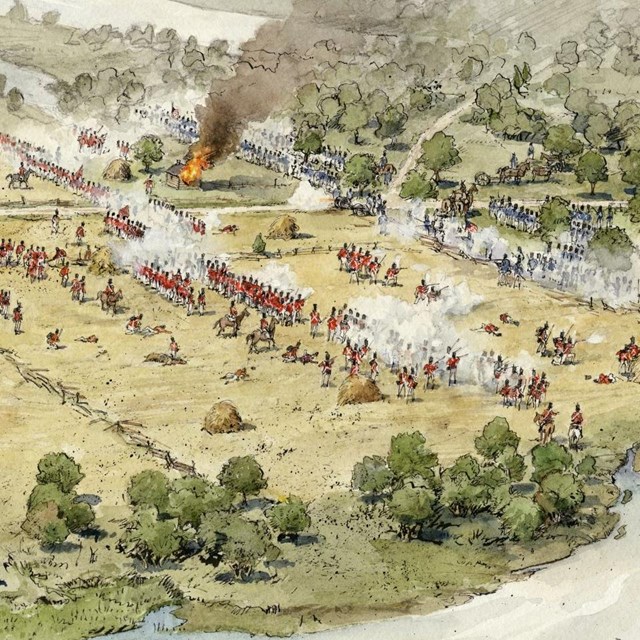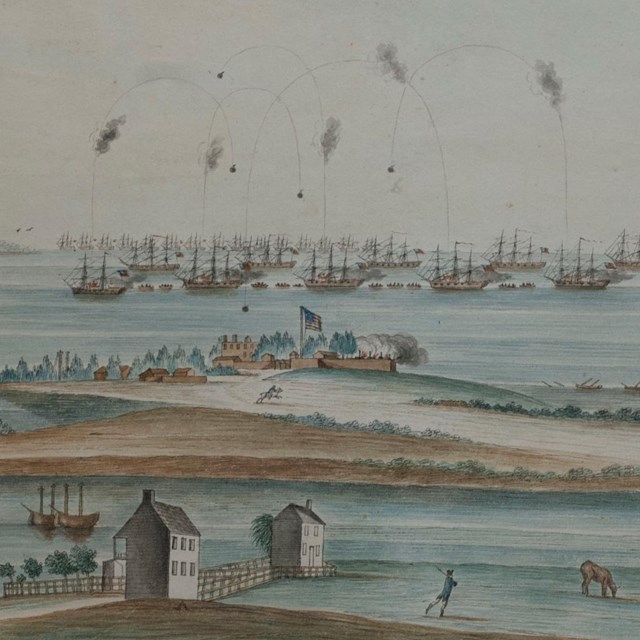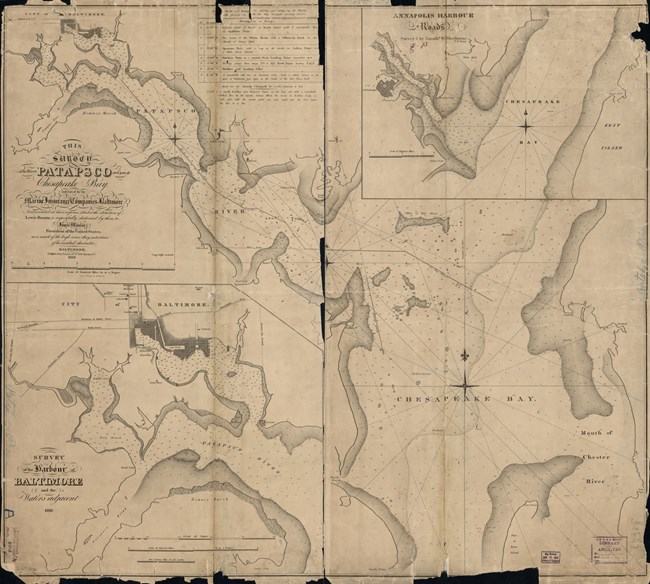
"This Survey of the River Patapsco and part of Chesapeake Bay," by Lewis Brantz and Fielding Lucas, Jr. 1819, Library of Congress The Chesapeake region was viewed by the British as a hub of decision-making, political power, and hostility—making it a strategic target. British warships moved into the region in February 1813 and sustained a military presence until 1815. The most concerted military effort in the region was the four-month campaign by the British in 1814. This period of intense military action, known as the Chesapeake Campaign of 1814, included many feints (maneuvers designed to distract or mislead) and skirmishes. During 1814, the British also invaded and occupied the nation’s capital and attempted to capture the city of Baltimore, which had developed an international reputation as a center for privateering. With a growing population in general, and the second largest population of African Americans in the country, Maryland was torn between a slave-based economy and the free states to the north. The British recognized and took advantage of this vulnerability. They liberated an estimated 4,000 enslaved people and used several hundred in their army in a special unit known as the Colonial Marines. Many of the former enslaved were taken to freedom in British-held colonies in North America (now Canada) and the West Indies. Southern Maryland and tidewater Virginia especially felt the effects of the British strategy to lure enslaved African Americans away from the tobacco plantations. Learn more about the War of 1812 in the Chesapeake Bay below. 1813 Chesapeake Campaign
1814 Chesapeake Campaign
Learn more
|
Last updated: November 17, 2023


